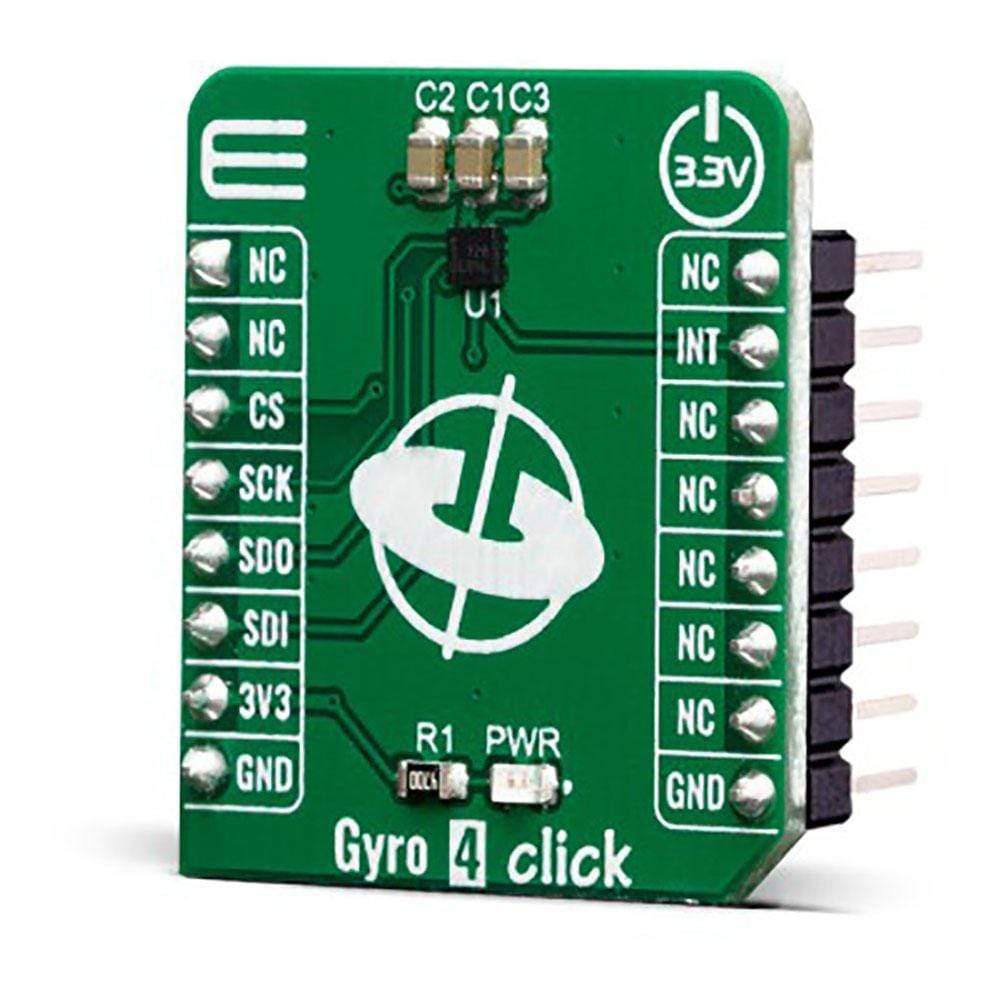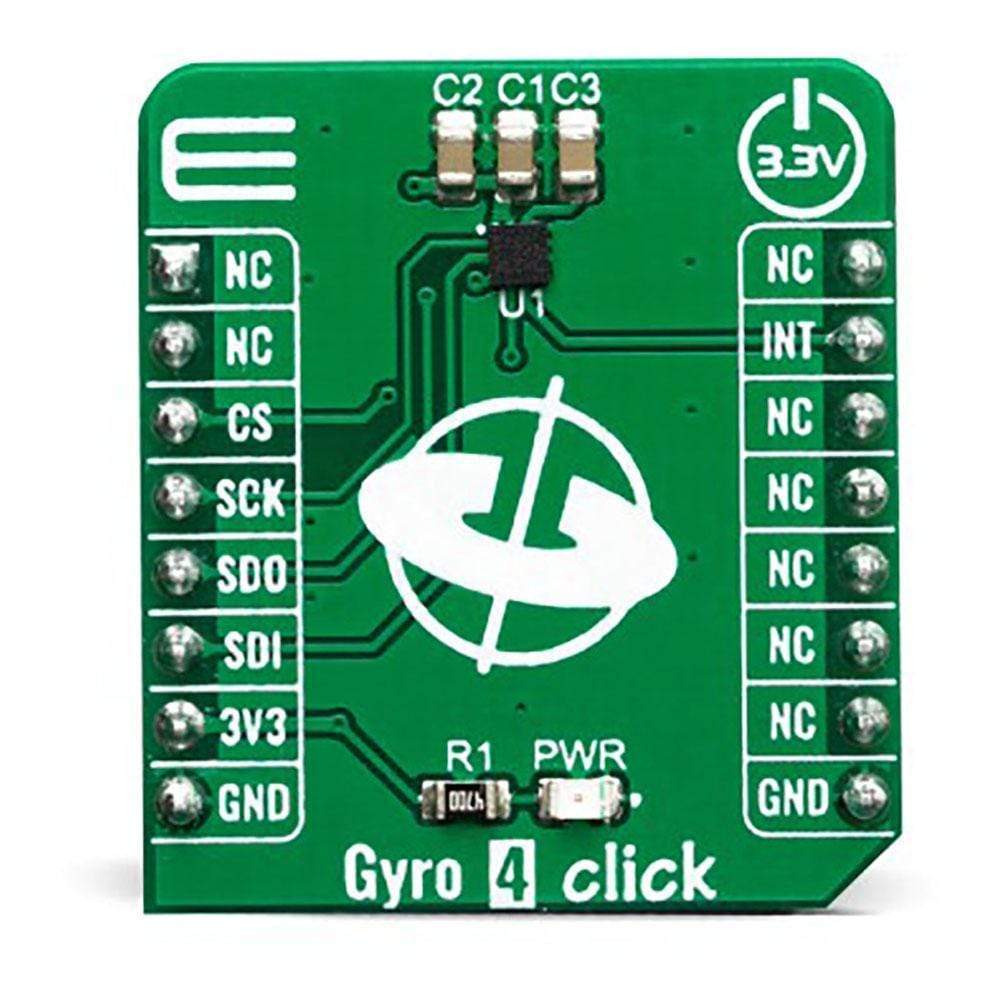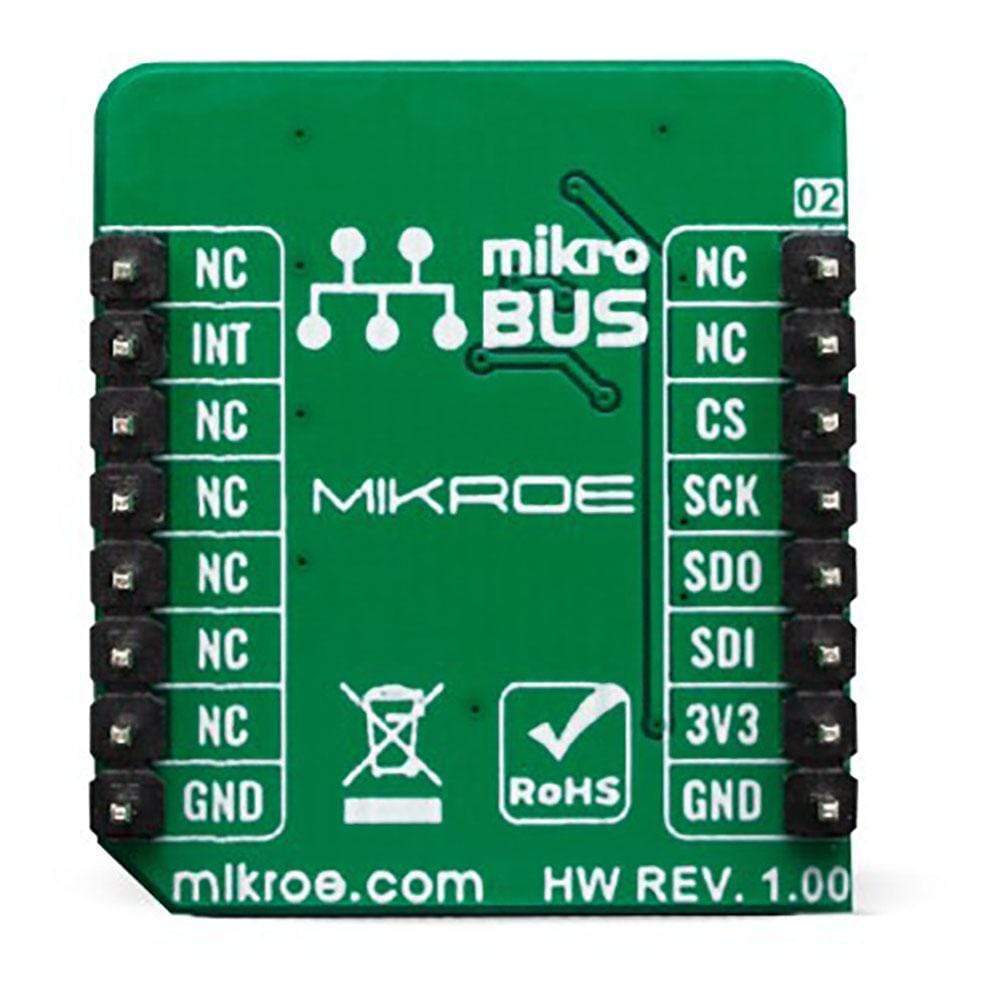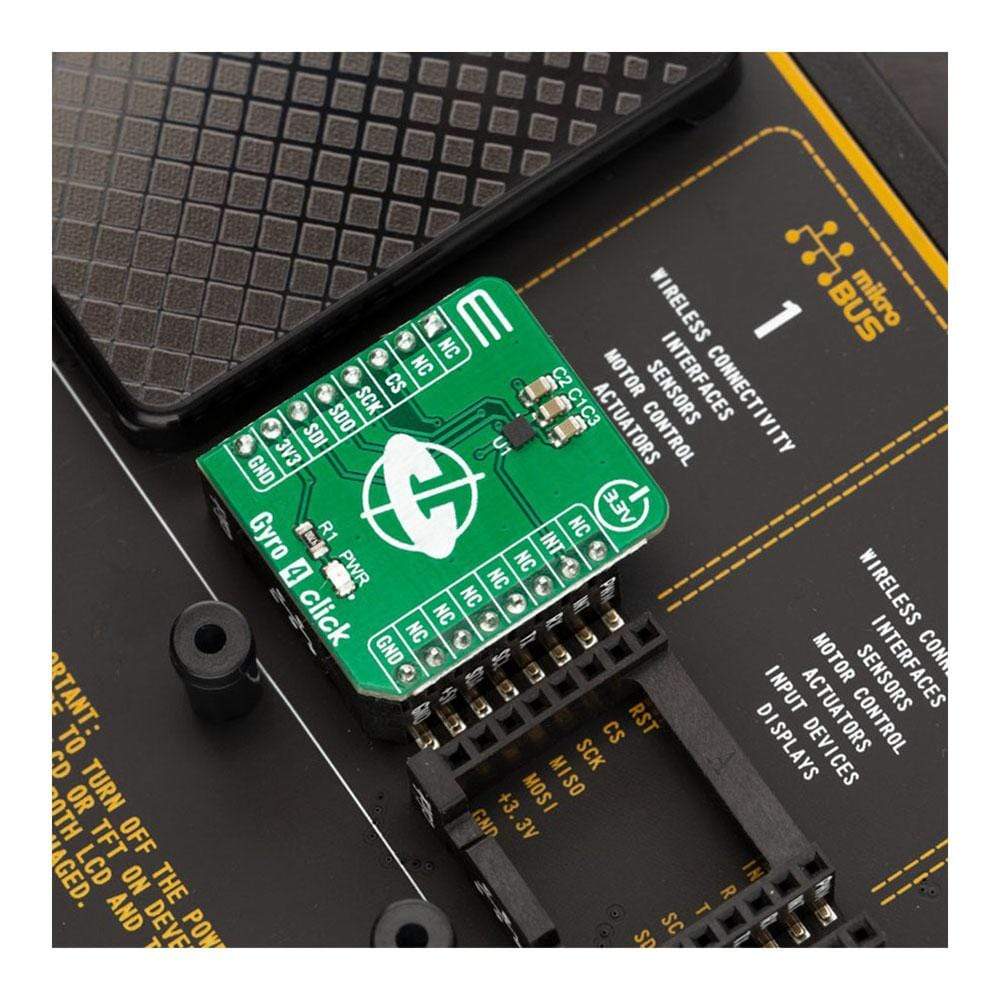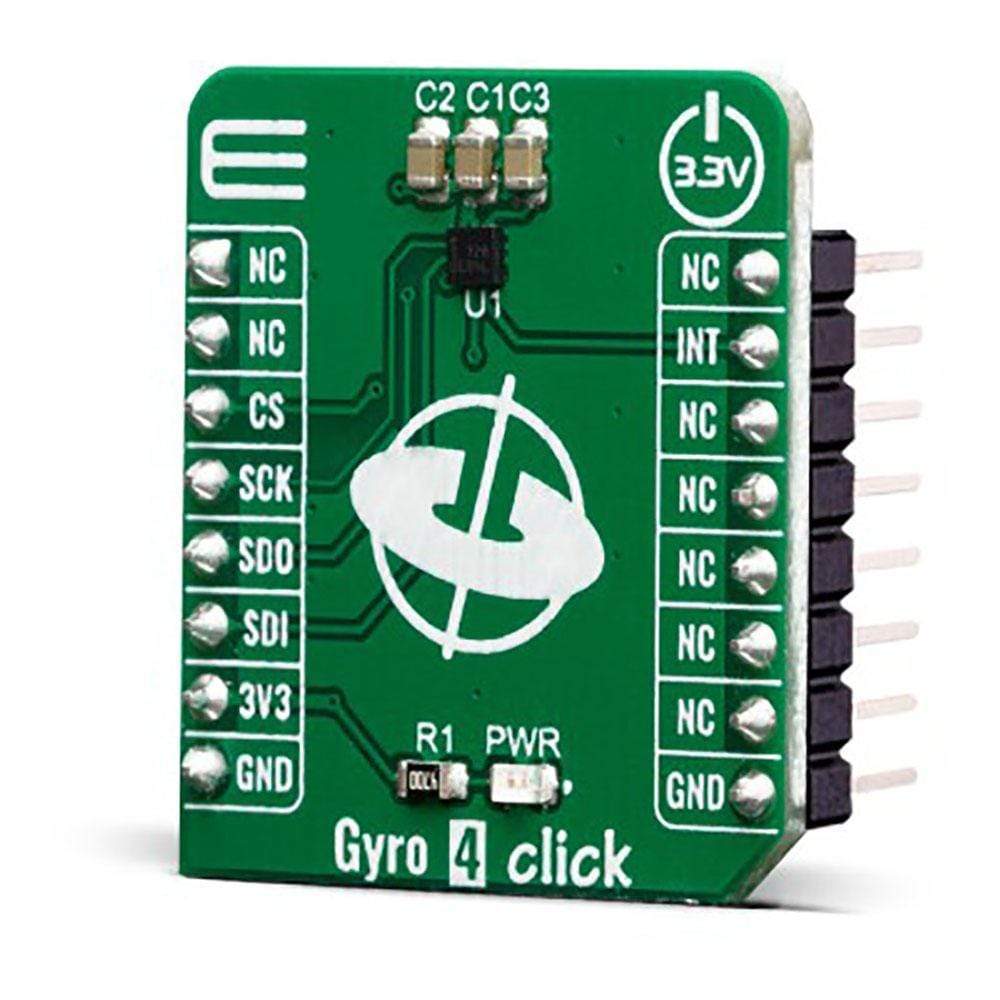
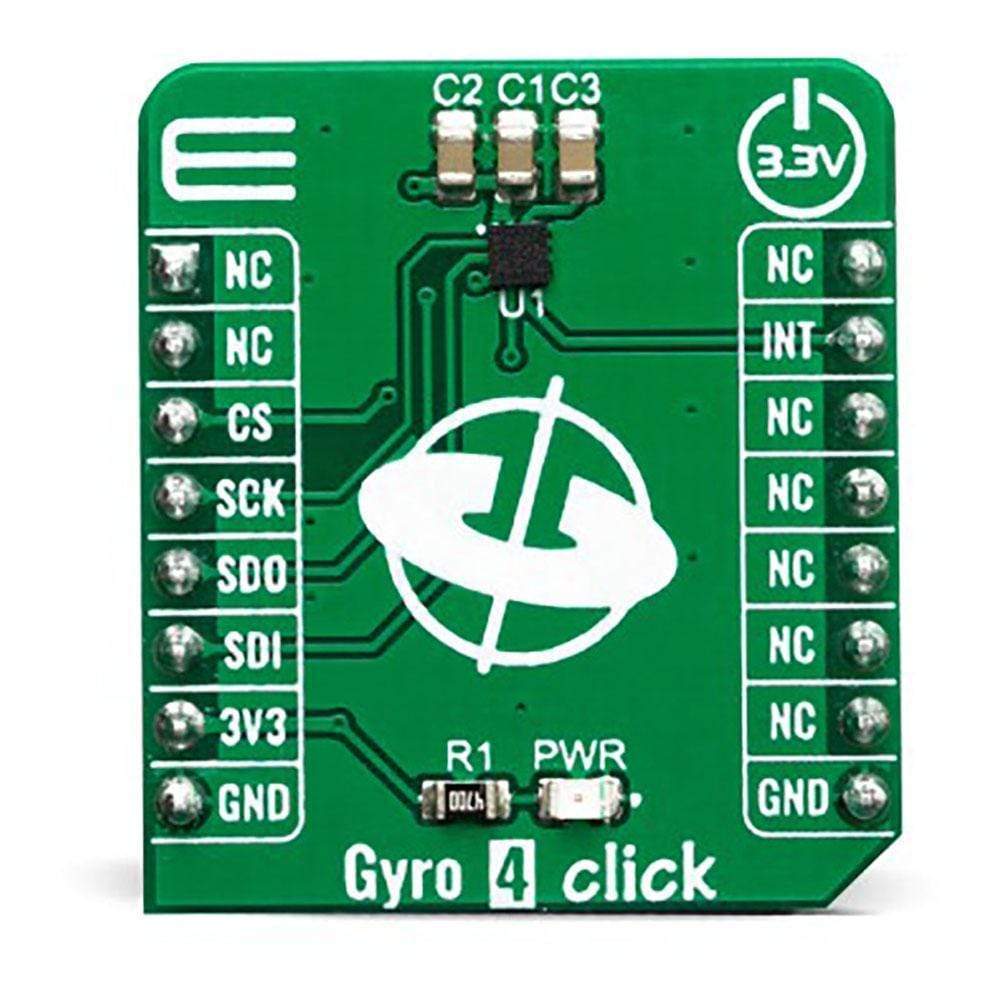
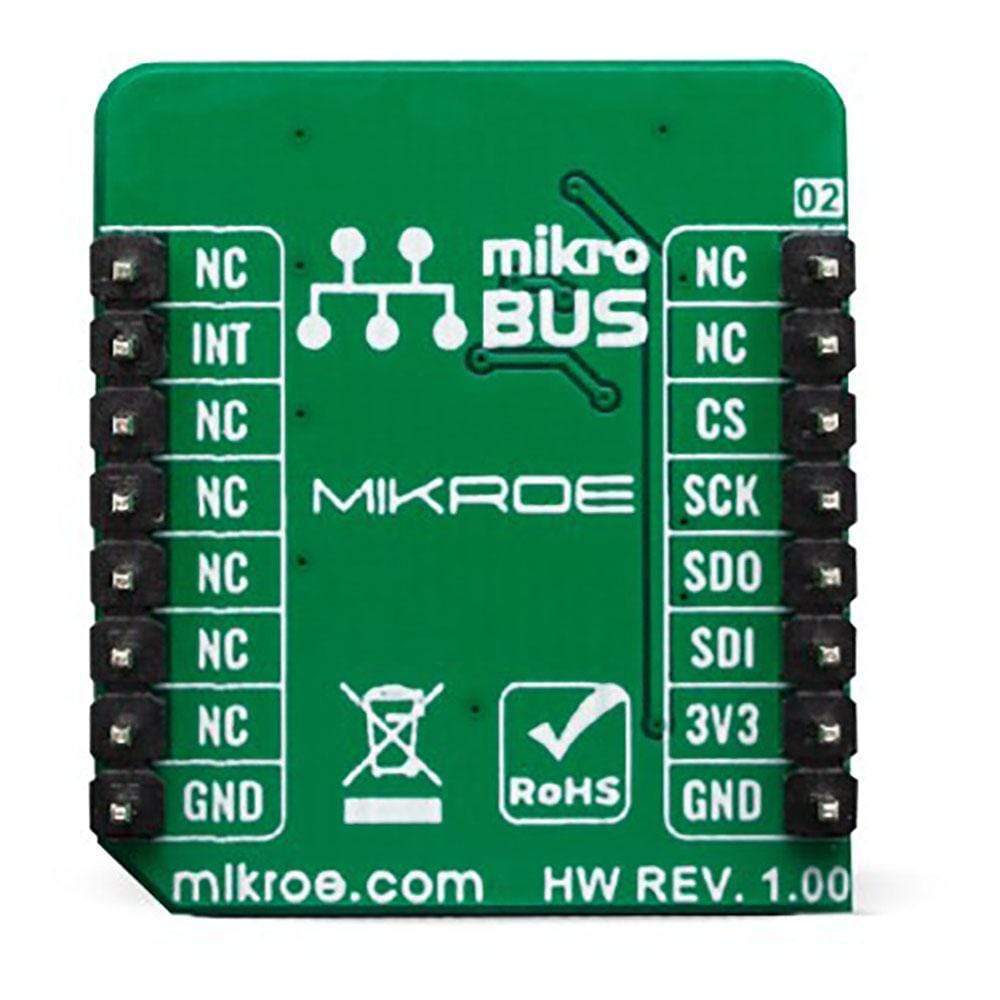
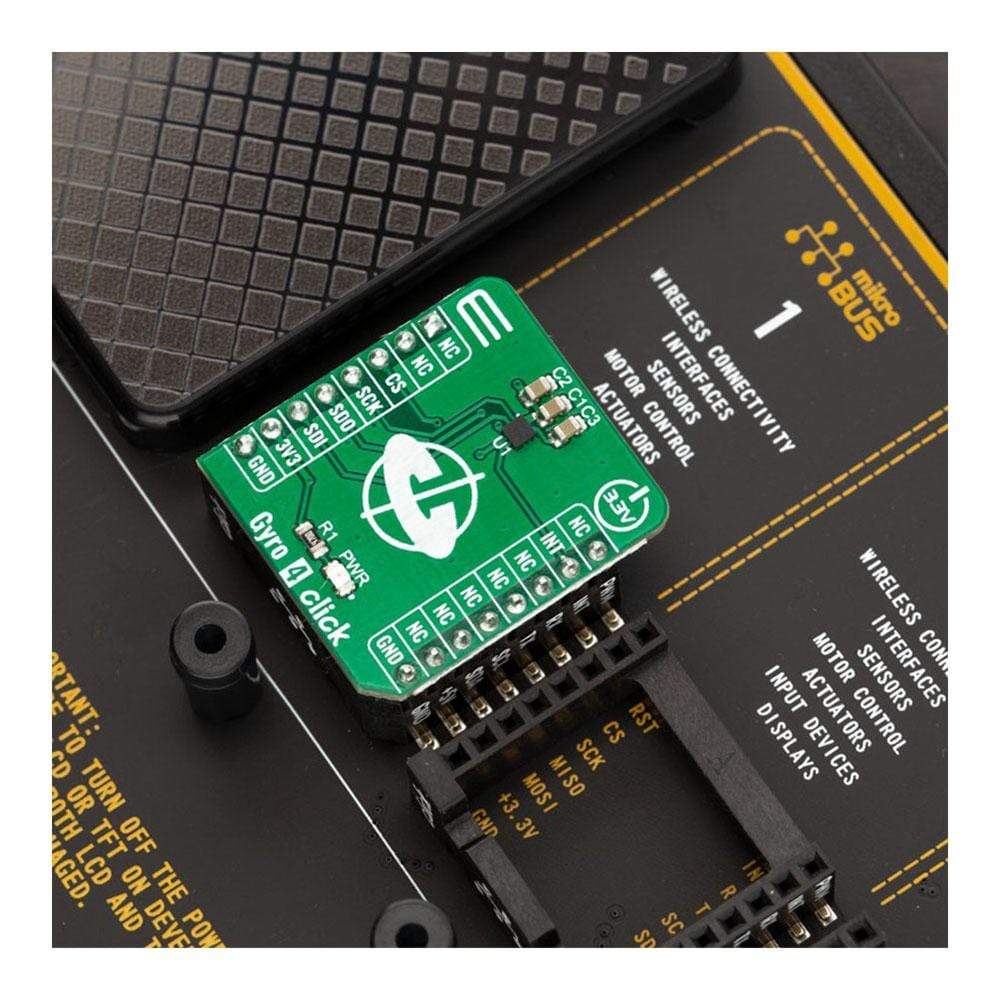
Overview
The Gyro 4 Click Board™ is a two-axis MEMS gyroscope for optical image stabilization applications. It is equipped with the L20G20IS, that includes a sensing element and an IC interface capable of providing the measured angular rate to the application through an SPI digital interface. The angular data is available in a 16-bit format, along with 12-bit device’s die temperature data. The IC interface is manufactured using a CMOS process that allows a high level of integration to design a dedicated circuit which is trimmed to better match the characteristics of the sensing element.
Downloads
Le Gyro 4 Click Board™ est un gyroscope MEMS à deux axes destiné aux applications de stabilisation d'image optique. Il est équipé du L20G20IS, qui comprend un élément de détection et une interface IC capable de fournir la vitesse angulaire mesurée à l'application via une interface numérique SPI. Les données angulaires sont disponibles dans un format 16 bits, ainsi que les données de température de la puce de l'appareil en 12 bits. L'interface IC est fabriquée à l'aide d'un processus CMOS qui permet un niveau élevé d'intégration pour concevoir un circuit dédié qui est ajusté pour mieux correspondre aux caractéristiques de l'élément de détection.
| General Information | |
|---|---|
Part Number (SKU) |
MIKROE-3661
|
Manufacturer |
|
| Physical and Mechanical | |
Weight |
0.017 kg
|
| Other | |
Country of Origin |
|
HS Code Customs Tariff code
|
|
EAN |
8606018716449
|
Warranty |
|
Frequently Asked Questions
Have a Question?
Be the first to ask a question about this.

